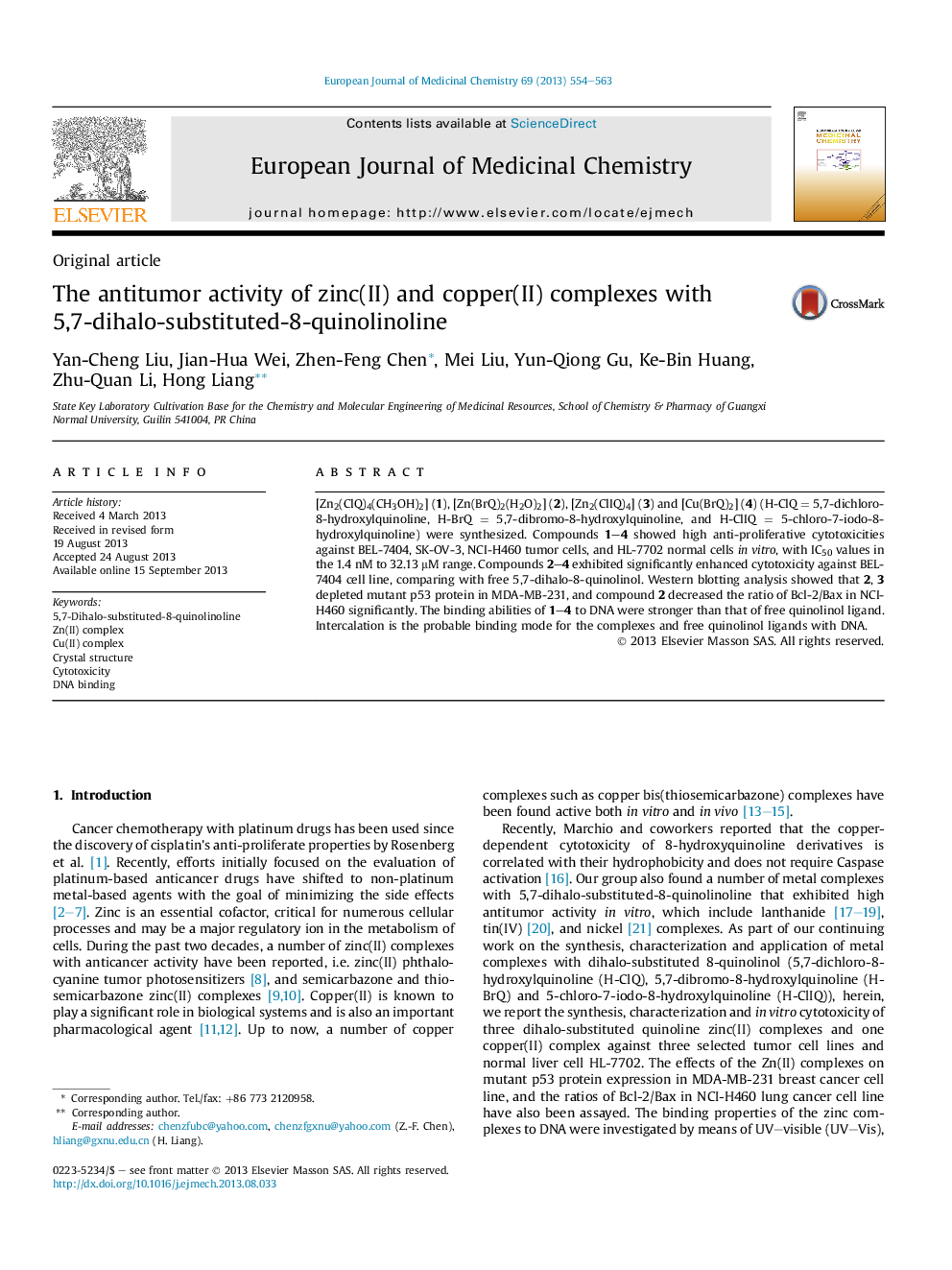| Article ID | Journal | Published Year | Pages | File Type |
|---|---|---|---|---|
| 1399026 | European Journal of Medicinal Chemistry | 2013 | 10 Pages |
•Three Zn(II) and Cu(II) complexes with 5,7-dihalo-8-quinolinolines were synthesized.•Theses complexes exhibited high antitumor activities against three human tumor cells.•Intercalation could be the most possible binding modes for these complexes to DNA.
[Zn2(ClQ)4(CH3OH)2] (1), [Zn(BrQ)2(H2O)2] (2), [Zn2(ClIQ)4] (3) and [Cu(BrQ)2] (4) (H-ClQ = 5,7-dichloro-8-hydroxylquinoline, H-BrQ = 5,7-dibromo-8-hydroxylquinoline, and H-ClIQ = 5-chloro-7-iodo-8-hydroxylquinoline) were synthesized. Compounds 1–4 showed high anti-proliferative cytotoxicities against BEL-7404, SK-OV-3, NCI-H460 tumor cells, and HL-7702 normal cells in vitro, with IC50 values in the 1.4 nM to 32.13 μM range. Compounds 2–4 exhibited significantly enhanced cytotoxicity against BEL-7404 cell line, comparing with free 5,7-dihalo-8-quinolinol. Western blotting analysis showed that 2, 3 depleted mutant p53 protein in MDA-MB-231, and compound 2 decreased the ratio of Bcl-2/Bax in NCI-H460 significantly. The binding abilities of 1–4 to DNA were stronger than that of free quinolinol ligand. Intercalation is the probable binding mode for the complexes and free quinolinol ligands with DNA.
Graphical abstractThree zinc(II) and one copper(II) complexes with 5,7-dihalo-8-hydroxylquinoline were synthesized. They exhibited high antitumor activities and interacted with DNA mainly by intercalation.Figure optionsDownload full-size imageDownload as PowerPoint slide
